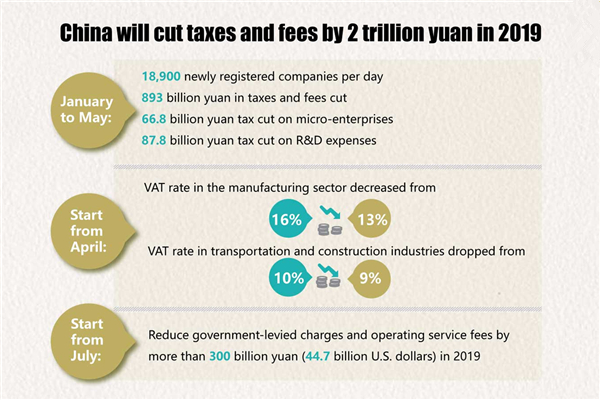In recent developments, the High Court ruling has significantly impacted redundancy rules, requiring Australian businesses to reassess how they approach employee dismissals. This landmark decision underscores the importance of understanding redundancy laws and the rights of employees before making staff reductions. Previously straightforward redundancy processes have now transformed into complex evaluations, compelling employers to actively consider restructuring their operations instead of merely declaring roles redundant. Additionally, failure to follow these new guidelines could expose businesses to increased claims of unfair dismissal, particularly in industries that rely on a mix of permanent and contractor staff. This evolution in redundancy rights highlights the necessity for employers to be informed and proactive in their workforce management strategies.
The recent changes to employee dismissal practices in Australia have introduced a heightened level of scrutiny around redundancy assessments. With the High Court’s embrace of a new perspective on workforce reorganization, terms like workforce restructuring and employee redeployment are now critical in the discussion of redundancies. Companies must navigate the evolving landscape of employment law, where the potential for inherent rights of workers takes center stage. As businesses adapt to these updated redundancy measures, understanding the implications of the High Court ruling becomes essential for maintaining compliance and avoiding legal pitfalls. The shift prompts employers to reconsider their operational strategies, focusing on creating sustainable roles for employees rather than relying heavily on external labor.
Understanding the New Redundancy Laws in Australia
The recent High Court ruling has introduced significant changes to the redundancy laws governing Australian businesses. Previously, an employer could terminate an employee by simply stating that the role was no longer required. Now, the court mandates that employers actively assess their business operations before considering redundancies, compelling them to explore avenues like restructuring their workforce. This shift aims to ensure that redundancies are genuine and that viable alternative roles are available within the organization, potentially mitigating unfair dismissal claims.
Employers must take a more proactive approach in evaluating whether their staffing arrangements, particularly involving contracted positions, can be adjusted to retain displaced employees. The ruling emphasizes the Fair Work Commission’s authority to investigate whether employers have considered all reasonable options, including the redeployment of redundant employees to roles currently occupied by contractors or labor hire personnel. As a result, businesses must now prepare for a more rigorous examination of their staffing models and redundancy processes.
Frequently Asked Questions
What are the new redundancy rules established by the High Court ruling for Australian businesses?
The High Court ruling has established that Australian businesses must now actively evaluate restructuring their operations before making redundancies. Employers need to demonstrate that they have considered options such as redeploying employees to roles currently held by contractors, rather than simply stating that no suitable roles are available.
How do the redundancy laws impact employee dismissal in light of the High Court ruling?
Under the new redundancy laws, employee dismissals can no longer be assumed to be fair if there are suitable redeployment opportunities available, particularly in cases where contractors are performing similar work. This increases the risk of unfair dismissal claims against Australian businesses.
What are the implications of the High Court ruling on redundancy rights for employees?
The High Court ruling enhances redundancy rights for employees by requiring that businesses take adequate steps to explore restructuring options. Employees now have more protection against unfair dismissals if they can be redeployed into roles rather than being made redundant without consideration of alternatives.
What steps should Australian businesses take to comply with the new redundancy rules following the High Court ruling?
Australian businesses should review their policies regarding redundancy, ensure they assess all potential internal redeployment options, and document their decision-making processes. This includes considering whether contractor roles can be filled by redundant employees and ensuring compliance with the Fair Work Act.
What constitutes a ‘genuine redundancy’ under the current redundancy rules after the High Court ruling?
A ‘genuine redundancy’ now requires that employers show they have actively explored options for restructuring their workforce to avoid dismissals. This means demonstrating that there were no reasonable alternatives or internal positions available for employees slated for redundancy.
How does the High Court ruling affect small businesses that rely on contractors?
The ruling places greater scrutiny on small businesses that utilize contractors alongside permanent staff. They must justify redundancy decisions by proving that they have considered replacing contractor roles with redundant employees, thus changing long-standing operational practices.
Can a company still implement layoffs if they fail to comply with the new redundancy requirements?
If a company does not comply with the new redundancy requirements established by the High Court ruling, it risks facing unfair dismissal claims. Documentation proving that all reasonable alternatives were considered is crucial to justify any layoffs.
What role does training play in the new redundancy rules post-High Court ruling?
Training is still relevant under the new redundancy rules; however, employers must evaluate whether further training for employees could enable them to take on alternative roles before dismissing them. Not providing such training does not automatically exempt businesses from redeployment obligations.
Why should businesses rethink their approach to workforce planning after the High Court ruling on redundancy laws?
Businesses need to rethink their workforce planning to align with the new redundancy laws that require more careful consideration of employee redeployment. Ignoring these changes can lead to costly unfair dismissal claims and potential operational restructuring challenges.
What is the significance of the Fair Work Commission in assessing redundancy claims?
The Fair Work Commission plays a crucial role in assessing redundancy claims under the High Court’s ruling. It has the authority to evaluate whether employers could have reasonably redeployed employees or adjusted their workforce operations to avoid redundancies.
| Key Point | Details |
|---|---|
| High Court Ruling | The High Court has set new standards for redundancies, requiring employers to evaluate business restructuring before staff termination. |
| Active Evaluation Required | Employers must demonstrate they have actively considered restructuring and redeployment options to claim a redundancy is genuine. |
| Impact on Small Businesses | The ruling may expose small businesses to unfair dismissal claims, particularly those reliant on contractors or labor hire. |
| New Obligations for Employers | Businesses must now justify not restructuring operations to utilize contractor roles for redundant employees. |
| Broader Redeployment Concept | Employers must now consider future roles and that reasonable redeployment options exist beyond existing vacancies. |
| Training Considerations | Training needs don’t exempt employers from redeployment obligations. |
| Review Policies and Contracts | Current contractor arrangements must be aligned with genuine operational needs to avoid redundancy claims. |
Summary
The ruling on redundancy rules by the High Court significantly alters the landscape for employers, pushing them to thoroughly evaluate options before considering staff termination. Redundancy rules now require businesses to not only demonstrate a genuine need for layoffs but also to look into possible restructuring and redeployment of existing staff, especially regarding contractor roles. As these changes unfold, employers must adapt promptly to avoid potential claims of unfair dismissal, marking a pivotal moment in employment law.


